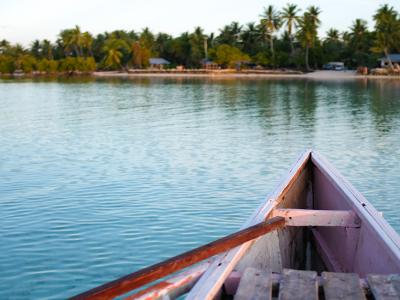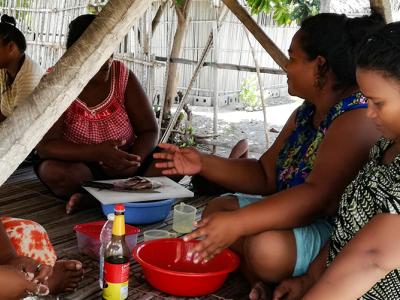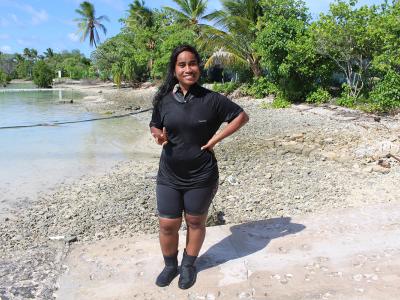Kiribati is situated in the Central Pacific Ocean and consists of 33 atolls with a total land area of about 800 sq km. The atolls have a maximum height of 3 to 4 m above mean sea level and support an estimated population of about 95,000 people. Most people live a subsistence lifestyle, as the country is amongst the poorest and least developed countries in the world - having only a few natural resources, the main industries are tourism and the exports of Copra and fish. The combination of its geographic location and economic situation makes Kiribati one of the most vulnerable countries to climate change. Global temperature increase affects coral growth and sea level. It is known that the heat content of the oceans has increased, and this could mean increase in internal energy (turbidity enhancement) of the oceans and/or increase in sea level. In Kiribati, coastal erosion, sea water from storm surges inundating the land, extensive sea spray, and coral bleaching are being observed - quite consistent with what to expect from climate change. These changes are adversely affecting the people’s livelihood. Climate change through its impacts of sea level rise leading to coastal erosion, and more frequent and damaging storm surges bounding on the edges of the land will reduce agricultural productivity such as of pandanus varieties, and coconut.
Active Projects
Projects Completed
Latest Updates
See allClick here to view this photo essay in…
Latest Publications
See allA team of three government officers - from the Local Government Division of the Ministry of Internal Affairs and Attorney General’s office - …







